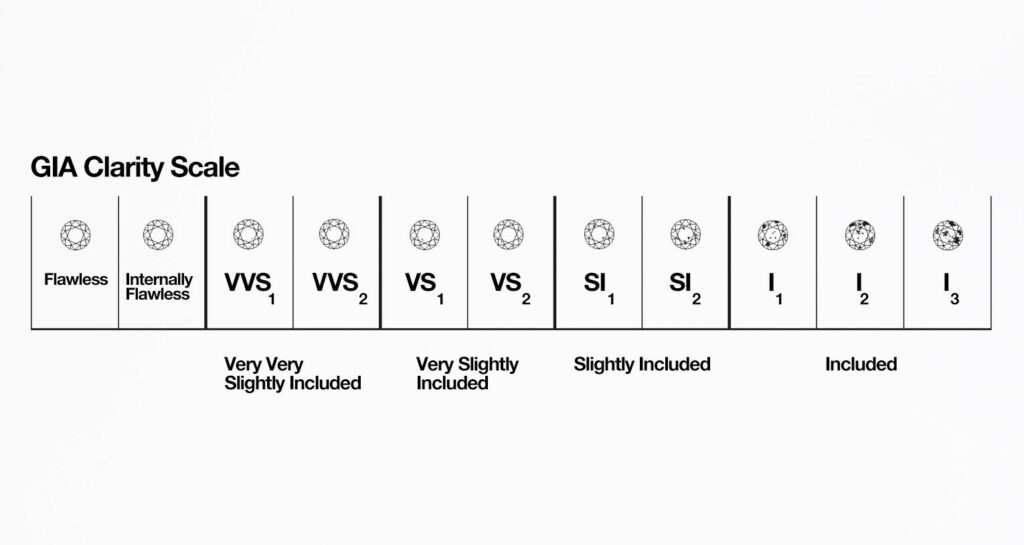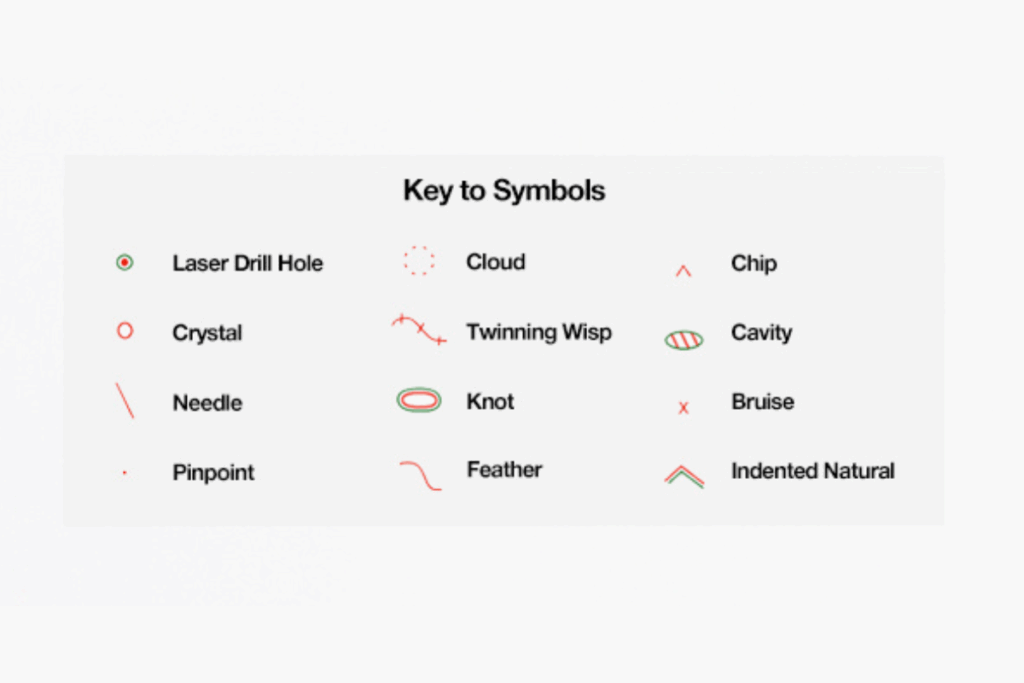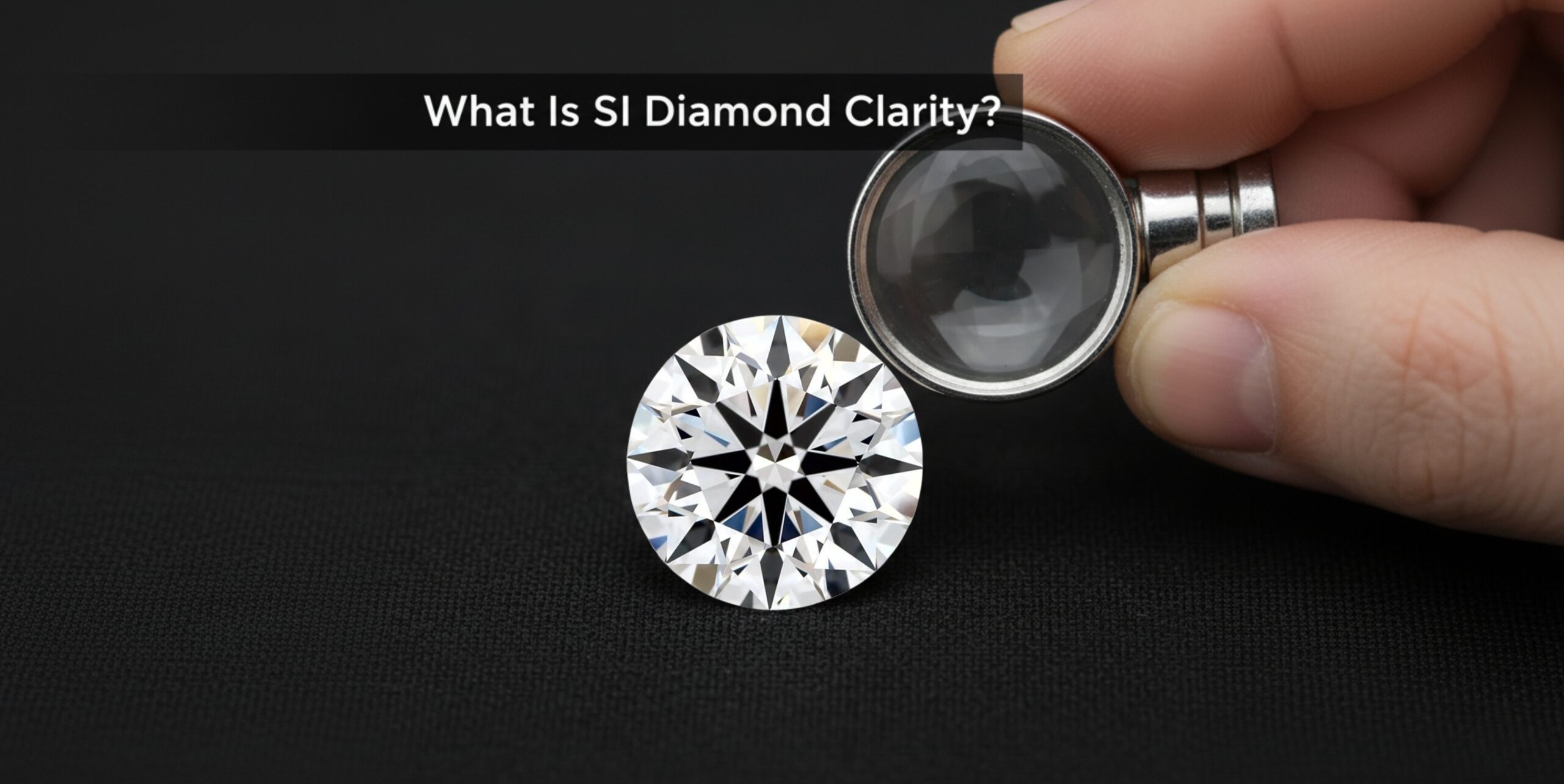SI Diamond Clarity: A Comprehensive Overview
For anyone shopping for an engagement ring, the clarity characteristics are often the biggest source of confusion, and the best place to save thousands. Forget the pressure to buy a flawless (FL) diamond; frankly, you’d be overpaying for perfection only a gemologist with a microscope can see. The smart money is on SI Diamond clarity, the secret weapon that allows you to buy a truly impressive stone without draining your savings.
Among the clarity grades, SI (Slightly Included) diamonds stand out as a popular choice because they strike the right balance between quality and affordability.
If you’re considering an SI clarity diamond, this guide will walk you through everything you need to know, from what SI means to how SI1 compares to SI2, the myth of SI3, price ranges, and practical buying tips.
What Is SI Diamond Clarity?
SI clarity diamonds fall into the mid-range of the GIA clarity scale. These diamonds contain obvious inclusions (internal flaws) or blemishes (external flaws) that are noticeable under 10x magnification, and in some cases, faintly visible to the naked eye.
Despite these imperfections, SI diamonds can still look stunningly beautiful, especially when well-cut, making them a perfect diamond choice for many buyers. Many buyers choose SI diamond because they offer more size and carat weight for the budget compared to higher clarity grades.
Understanding the Diamond Clarity Scale

The GIA (Gemological Institute of America) clarity scale is the international standard, measuring the size, number, position, nature, and relief of internal inclusions and external blemishes under 10x magnification.
The SI Diamond grade falls in the center of the scale, bridging the gap between nearly perfect stones and those with visible flaws.
| GIA Clarity Category | Meaning | Key Characteristic |
| FL | Flawless | No flaws visible at 10x magnification. |
| IF | Internally Flawless | No internal flaws at 10x magnification. |
| VVS | Very, Very Slightly Included (VVS1, VVS2) | Inclusions are extremely difficult to see at 10x magnification. |
| VS | Very Slightly Included (VS1, VS2) | Inclusions are difficult to see at 10x magnification. |
| SI | Slightly Included (SI1, SI2) | Inclusions are noticeable at 10x magnification. |
| I | Included (I1, I2, I3) | Inclusions are obvious at 10x magnification and may affect brilliance. |
The Non-GIA Grade: What is “SI3” Clarity?
The GIA or other major, reputable diamond grading laboratories do not recognize the grade SI3. It is an internal grade sometimes used by vendors to categorize diamonds that technically fall between an SI2 and a lower-quality I1 on the official GIA scale.
Buyers should treat any diamond graded as SI3 with caution, as it is likely a stone the GIA would grade as I1 (Included), meaning its flaws are likely visible without magnification. Always insist on a GIA or AGS certificate.
SI1 vs. SI2 vs. VS2: The Key to Value Buying
The most critical decision for the budget-conscious buyer is where to position themselves on the clarity spectrum, while ensuring the diamond quality remains eye-clean—meaning no inclusions are visible to the naked eye under normal viewing conditions.
| Clarity Grade | Naked-Eye Visibility | Durability Concern | Value Position |
| SI1 | The SI range of clarity grades includes SI1, which is most often eye-clean. Inclusions are usually minor and off-center. | Rarely a concern. | The sweet spot for value; it looks flawless to the eye. |
| SI2 | Requires careful review; some may have visible flaws (especially in larger stones). | May occasionally have a surface-reaching feather near the edge. | Requires the most inspection, but offers the greatest cost savings. |
| VS2 | Almost always eye-clean. Inclusions are minor and very hard to find. | No concern. | Excellent quality, but typically 10–20% more expensive than SI1. |
When SI1 Offers the Best Value
The SI1 grade frequently offers the best overall excellent value. It provides a high probability of finding an eye-clean stone that, when viewed without a jeweler’s loupe, is visually indistinguishable from a VS or VVS diamond. By choosing a well-vetted SI1, you can confidently allocate more of your budget toward carat weight or an Excellent cut grade, both of which have a greater impact on a diamond’s face-up beauty.
Expert Tips for Buying a Perfect SI Diamond
When you buy diamonds and you’re told that the stone you’re staring at is SI clarity grade, you invariably wonder whether or not it’s SI1 or SI2. If the vendor doesn’t tell you the precise grade, you should not purchase the stone.
Don’t forget to elicit a certificate before creating a sale; this will enable you to verify that the diamond grades are accurately ranked, as described ideally by an esteemed grading science laboratory.
We have already seen that the distinction between SI1 and SI2 is visible to the unaided eye. As you would possibly guess, these 2 grades jointly raise the issue of the worth, including the light performance that an SI1 stone can provide. An SI1 stone will be many bucks dearer than an SI2 diamond.
If you wish to avoid wasting cash by shopping for SI2 rather than SI1 clarity, do investigate many alternative SI2 stones and look at them from all sides. Some diamonds during this class have noticeable inclusions that are a lot more visible, whereas others have fewer inclusions with flaws that will barely be seen, and you’ll be able to get a stone that appears fairly clean at an honest price.
It is necessary to contemplate, however, that the diamond is going to be worn. If it’ll be set during a mounting that may cover the stone’s sides, then an SI2 diamond could also be an honest selection, especially for styles like step cut diamonds, as no matter visible flaws it has on its sides, these inclusions are going to be hidden by the setting anyway, while ensuring good cut quality.
Analyzing the Clarity Plot and Inclusion Types

The GIA report’s Clarity Plot is essential for SI diamonds, detailing the size and location of every flaw, including any cloudy formations.
| Factor to Prioritize | Factors to Avoid |
| Location: Inclusions near the girdle (edge) where they can be covered by prongs or the setting. | Location: Dark or prominent inclusions directly under the table (the large top facet). |
| Nature: White/Transparent inclusions like faint Pinpoints or soft Clouds. | Nature: Black Crystals or large, deep Feathers that reach the surface (which can pose a durability risk). |
| Relief: Faint characteristics that blend with the diamond’s brilliance. | Relief: Features that appear dark or hazy, such as an excessive concentration of Clouds that can cause the stone to look “milky” or dull. |
The Role of Cut Quality and Carat Weight
- Diamond Cut is King: An Excellent or Ideal cut grade is non-negotiable for SI diamonds. The brilliance and scintillation produced by a high-quality cut are the most effective way to mask minor inclusions.
- Carat Weight Matters: As the diamond’s carat weight (and thus its physical size) increases, inclusions become proportionally easier to see. A visible flaw in a 2-carat SI1 diamond is more obvious than a similar flaw in a 0.5-carat SI1 stone. Ultimately, it comes down to personal preference; for larger diamonds (over 1.5 carats), consider starting your search at VS2.
Choosing the Right Diamond Shape for an SI Diamond
The faceting pattern of a diamond shape dictates how well it hides inclusions:
| Best for Hiding SI Inclusions (Brilliant Cuts) | Worst for Hiding SI diamonds Inclusions (Step Cuts) |
| Round, Cushion, Oval, Radiant, Pear | Emerald, Asscher cut |
| The intense, scattered light reflection of these brilliant cuts camouflages flaws. | The long, parallel “steps” of these cuts act like clear windows, highlighting every flaw. |
Is SI1 Clarity Truly Eye-Clean? The Final Inspection
The million-dollar question for any SI buyer is: Will I see the flaws?
The short answer is: Not usually, but you have to check.
The majority of SI1 diamonds are considered eye-clean, meaning their inclusions are virtually impossible to see with the naked eye under normal conditions. This is the whole reason the grade offers such incredible value; it looks flawless on your hand, but you save money because a gemologist had to work a little harder under the loupe to find the flaws.
How to Guarantee Your SI1 Diamond is Eye-Clean
The “eye-clean” status is determined by the location and nature of the flaw, not just the SI1 grade itself.
- Examine the Center Table: The most critical check is to look directly down onto the diamond’s table facet. If a flaw is dark, large, and sitting right there, it will catch the light and be visible. Skip that stone.
- Look for Edges, Not Centers: Your ideal SI1 has inclusions pushed toward the girdle (the diamond’s edge). Once the stone is secured in its setting, the prongs or the metal rim will likely cover these peripheral flaws completely.
- The Cut Quality Mask: Remember that a diamond with an Excellent Cut will appear cleaner. Its intense sparkle, fire, and brilliance scatter light so effectively that they essentially “mask” minor internal inclusions.
Price, Purchase, and the Power of Certification
You’ve done the work, found your SI1 sweet spot, and now it’s time to buy. This is where your financial savings and peace of mind converge. Because you’ve chosen a high-value grade, you must be precise about the price and source to ensure you’re getting an eye-clean stone.
Finding Your SI1 Value and Trusted Retailers
Choosing the SI1 clarity grade is a strategic move, allowing you to buy a larger, more impactful diamond than your budget might have allowed at the VS clarity level. To buy smart, you need absolute transparency in pricing and visual inspection.
SI Diamond Natural Diamond Price Context
Don’t be fooled by impossibly low prices; quality SI diamonds retain significant value. A well-cut 1.00 Carat, G/H Color, Excellent Cut, SI1 Clarity natural diamond will realistically cost between $4,500 and $6,500. This saving (compared to a VS grade) is what you redirect into a higher carat weight or better color.
SI Diamond Lab Grown Diamond Price Context (LGD)
The cost savings with lab grown SI1 diamonds are dramatic. For an equivalent stone, a well-cut 1.00 Carat, G/H Color, Excellent Cut, SI1 Clarity, you can expect to pay roughly $200 to $1,000. This makes the lab-grown SI1 category an incredible way to maximize size (up to 2 or 3 carats) while maintaining visual perfection.
The Right Online View: Your Virtual Inspection
You must shop where you can perform your own virtual inspection. Top online retailers like James Allen and Blue Nile are the industry standard for SI purchases because they provide high-magnification, 360-degree videos of the exact stone. This visual confirmation is critical; it lets you personally verify the diamond is eye-clean before it ever ships to your home. And if you want more affordable options, you can go with a diamond manufacturer who sells diamonds at wholesale price, or sell loose diamonds or rough diamonds online.
Certification: The Only Guarantee for Clarity
For SI Diamond clarity, the official grading report is your absolute warranty against guesswork. Since you are specifically looking for a stone where inclusions are minimal, the report must prove that the flaw that earned the “SI” grade isn’t a detrimental one.
Why GIA/AGS Certification Matters
The importance of using a reliable certifier like the GIA (Gemological Institute of America) or AGS (American Gem Society) cannot be overstated. Only these strict, consistent labs ensure your stone is graded fairly.
Crucially, only these reports include the Clarity Plot (the inclusion map) that confirms the nature and position of the flaw. This document ensures that the inclusion that earned the stone its SI grade is not:
- A Structural Risk: A large feather reaching the surface, which could compromise durability.
- A Visual Detraction: A dark crystal located right under the center table.
By relying on GIA or AGS certification, you ensure that the confidence you feel in your high-value, eye-clean purchase is backed by global gemological science.
FAQs:
Is SI diamond clarity a bad grade to buy?
Absolutely not. SI diamond clarity is the sweet spot for maximizing value. A well-chosen SI1diamond is often eye-clean, meaning it looks perfect to the naked eye. You are simply paying less for microscopic flaws that have zero impact on the diamond’s beauty or brilliance.
Should I buy a natural SI1 or a lab-grown SI1?
It depends on your priority. Choose natural SI1 if you prioritize rarity and resale value. Choose lab-grown SI1 if you prioritize size; you can get a diamond that is 2 to 3 times larger for the same budget while still being visually perfect.

